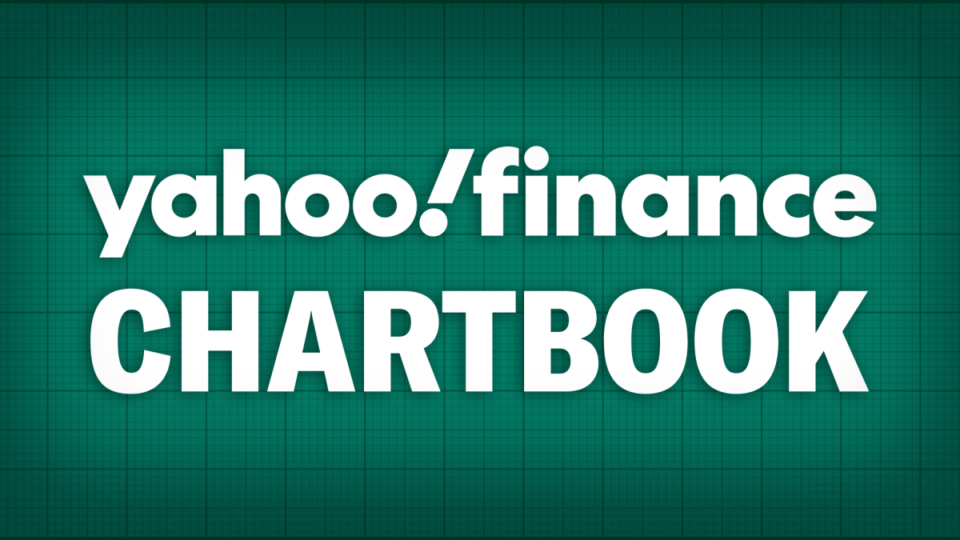Inflation remains a top story on Wall Street as investors await interest rate cuts from the Federal Reserve.
The central bank has said it wants to see more evidence that price increases are easing before it starts to bring rates down. The next inflation reading, the January Consumer Price Index (CPI), will come out on Tuesday.
We recently asked some of Wall Street’s top strategists to contribute the most important chart for investors right now in the latest edition of the Yahoo Finance Chartbook.
These six graphs, all of which were submitted before Jan. 26, show how inflation has declined faster than many predicted while consumer spending has been strong, putting the Fed’s goal of a “soft landing” where price increases ease without a severe economic downturn within reach. But it’s unclear whether inflation has come down for good.
“Core PCE inflation fell surprisingly quickly in 2023, from a 4% annualized pace in the first half of the year to a 2% pace in the back half. We now expect the year-on-year rate to fall much more quickly in 2024 than we had expected just a few months ago, reaching 2.2% already by Q2. As a result, we think the FOMC will likely be comfortable cutting earlier and a bit more quickly than we had initially envisioned.”
Andrew Hunter, deputy chief US economist, Capital Economics
“The annual rate of core PCE inflation remains elevated, but in annualized terms, it has already been running in line with the Fed’s 2% target for the past six months. Despite claims from a number of commentators that the ‘last mile’ of getting inflation back to target will somehow be the hardest, this ignores the fact that we’ve already been there for half a year. Rather than a further slowdown, all the Fed needs to see is this current pace of price increases sustained for a few more months.”
Matthew Luzzetti, chief US economist, Deutsche Bank
“The Federal Reserve has surprised markets over the past month with a dovish pivot that kicked off the discussion around rate cuts. A key reason for the timing of this shift is the surprisingly quick deceleration in inflation. Softer inflation has, in turn, raised the prospect that Fed policy could overtighten in the coming months if the Fed does not begin to reduce rates. Such an outcome could put the soft landing at risk.
“The accompanying chart demonstrates how the real fed funds rate — measured as nominal fed funds minus spot inflation on a year-over-year basis — is likely to lurch higher as inflation falls. If the Fed does not reduce rates over the coming months, the real fed funds rate would begin to tighten to historically elevated levels that have often been followed by economic slowdowns or recessions.”
Nancy Vanden Houten, lead economist, Oxford Economics
“The Federal Reserve needs to be confident that inflation is on a sustainable path to 2% before lowering interest rates. … The decline so far has been led by declines in goods prices as supply chain snarls have been resolved. The key to the final leg down in inflation is slower inflation in services, including housing.
“As with the CPI, housing costs in the core PCE lag changes in actual rents; given weaker rent growth over the last several months, further declines in the housing component of core PCE are pretty much assured. Services inflation apart from housing is being propped up by higher wage growth, which the Fed would prefer to see at around 3.5% y/y [year over year]. We expect slower job growth will translate into ongoing moderation in wage growth as we move through 2023.
“We expect the y/y increase in core PCE to fall to about 2.7% in the second quarter and that that will be enough to trigger the start of Fed rate cuts in May. The Fed won’t wait for core PCE inflation to hit 2% before lower rates. As Fed Chair Powell said last month, waiting until inflation hits 2% would be too late and risk causing too much weakness in the economy.”
Mark Zandi, chief economist, Moody’s Analytics
“Critical to the economy in 2024 will be if consumers continue to do their part and maintain their spending. It is thus encouraging to see inflation moderate to below the growth in wages across all wage tiers. Consumers’ improving purchasing power, combined with low debt service burdens, higher net worth, and still plenty of excess saving among high income households, should ensure that consumers hang tough and that the economy and markets have another good year.”
Michele ‘Mish’ Schneider, chief strategist, MarketGauge.com
“Inflation versus disinflation is not only a contentious debate, but also the single most important consideration for 2024. Has this inflation cycle peaked, and we are over the worst, as many think, or could we be in for another wave similar to what we saw in the 1970s?
“The chart shows an overlay of [year-over-year CPI change in the 1970s with that of 2014 to the present]. We see striking similarities, almost an exact mirror image. The 1974-1975 inflation peak looks very similar on the chart to the 2022 peak and decline. However, in 1977, inflation turned back up and made a new high and continued that cycle for another 5-6 years. Super cycles don’t just fade away — they cycle — with volatility and passion just like the word super suggests, and inflation is known to be persistent and pernicious. …
“We expect the next wave of inflation to begin to occur in late spring/summer 2024. If that does indeed happen, the domino effect to Fed policy, the economy, … and equities will have a huge impact.”
Josh Schafer is a reporter for Yahoo Finance. Follow him on X @_joshschafer.
Click here for in-depth analysis of the latest stock market news and events moving stock prices.
Read the latest financial and business news from Yahoo Finance

